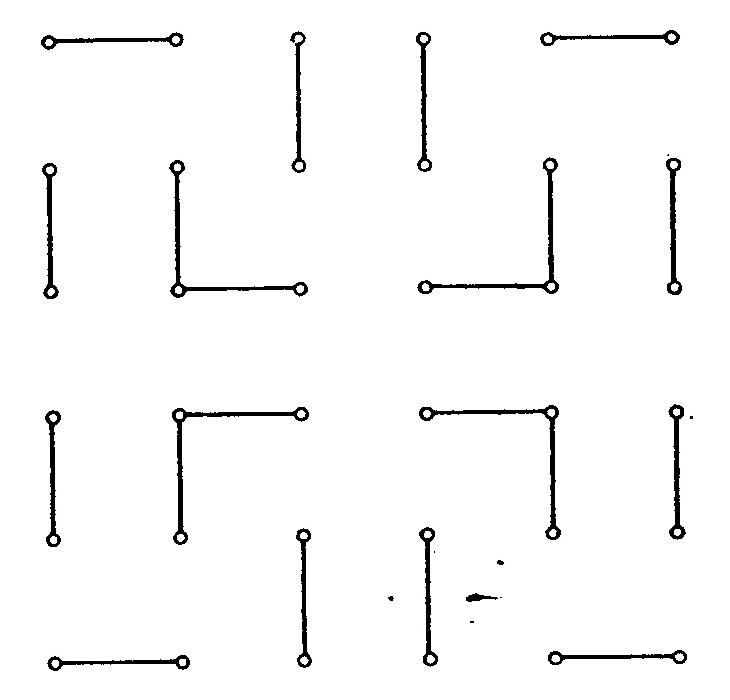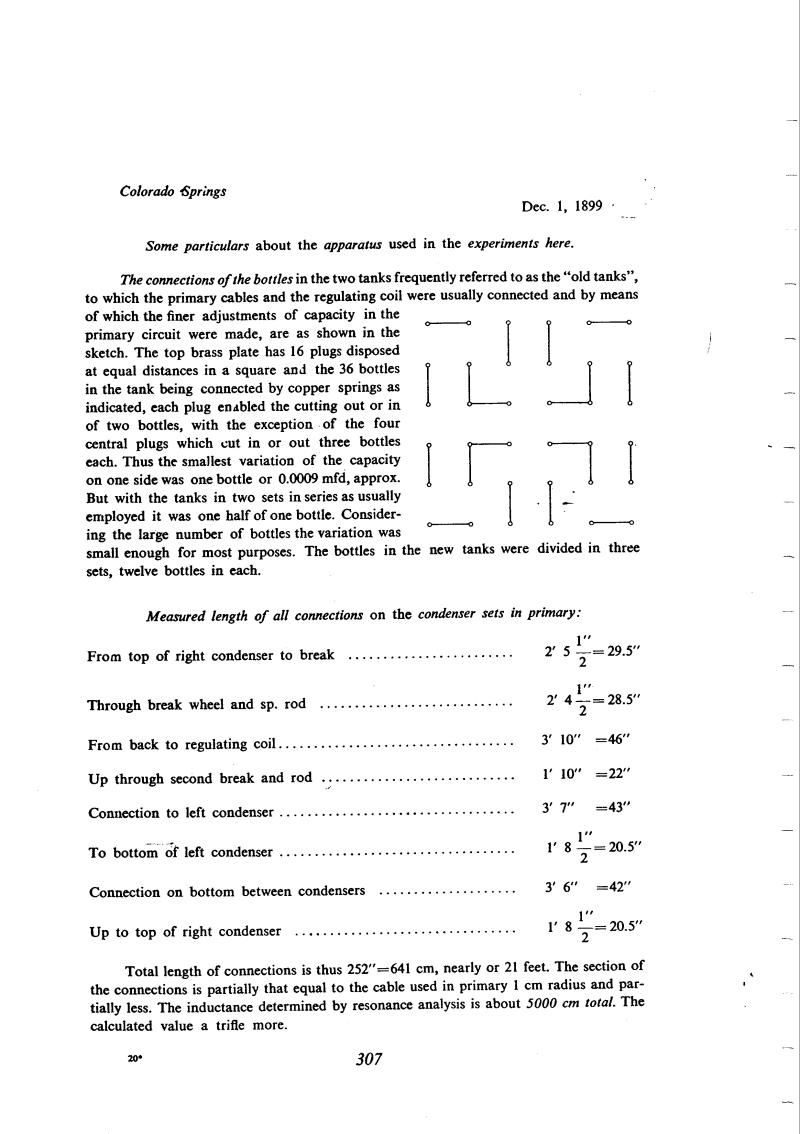
Nikola Tesla Books
Colorado Springs
Dec. 1, 1899
Some particulars about the apparatus used in the experiments here.
The connections of the bottles in the two tanks frequently referred to as the âold tanksâ, to which the primary cables and the regulating coil were usually connected and by means of which the finer adjustments of capacity in the primary circuit were made, are as shown in the sketch. The top brass plate has 16 plugs disposed at equal distances in a square and the 36 bottles in the tank being connected by copper springs as indicated, each plug enabled the cutting out or in of two bottles, with the exception of the four central plugs which cut in or out three bottles each. Thus the smallest variation of the capacity on one side was one bottle or 0.0009 mfd, approx. But with the tanks in two sets in series as usually employed it was one half of one bottle. Considering the large number of bottles the variation was small enough for most purposes. The bottles in the new tanks were divided in three sets, twelve bottles in each.
Measured length of all connections on the condenser sets in primary:
| From top of right condenser to break | 2' 5 1/2" = 29.5" |
| Through break wheel and sp. rod | 2' 4 1/2" = 28.5" |
| From back to regulating coil | 3' 10" = 46" |
| Up through second break and rod | 1' 10" = 22" |
| Connection to left condenser | 3' 7" = 43" |
| To bottom of left condenser | 1' 8 1/2" = 20.5" |
| Connection on bottom between condensers | 3' 6" = 42" |
| Up to top of right condenser | 1' 8 1/2" = 20.5" |
Total length of connections is thus 252" = 641 cm, nearly or 21 feet. The section of the connections is partially that equal to the cable used in primary 1 cm radius and partially less. The inductance determined by resonance analysis is about 5000 cm total. The calculated value a trifle more.
20*
307
TRIBUTE TO NIKOLA TESLA, Nikola Tesla Museum, Belgrade, 1961 (from now on: Tribute), Fleming A. P. M âNikola Teslaâ, Jour. of Instit. of Electr. Eng., London, vol. 91, February 1944, A-215.


